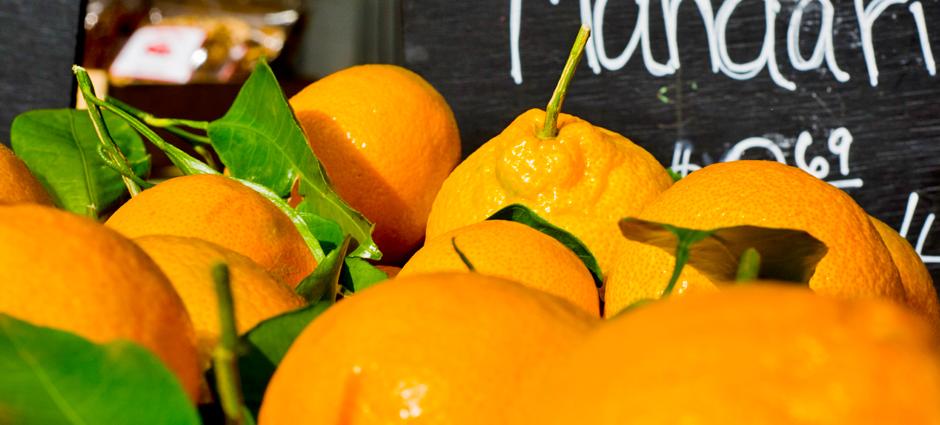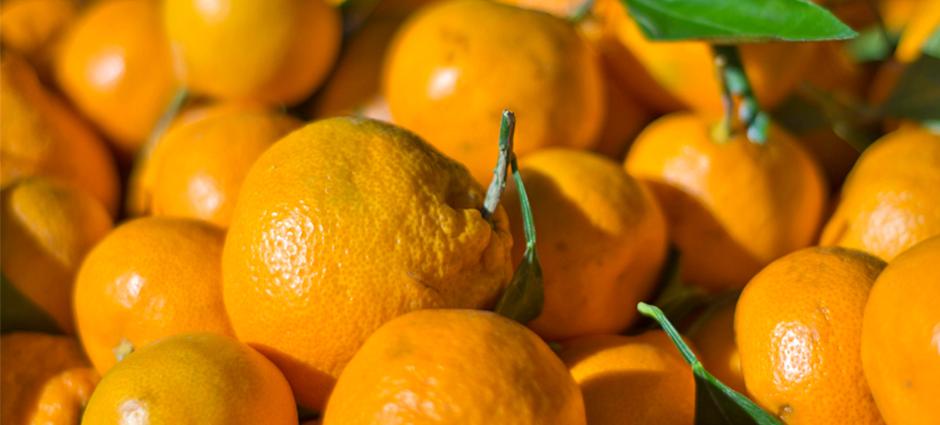The Significance of Mandarins for the Lunar New Year
It’s the Year of the Dragon! On February 10, 2024 the Lunar New Year begins and is celebrated for 14 days. It’s a time to welcome longevity, wealth, and prosperity to your life and to eliminate any negative “chi” or energy. Make a trip to the farmers’ market to pick up the ingredients that dispel the negative and turn 2024 into positive energy!
Tangerines and oranges are a major part of the Lunar New Year celebration and represent happiness and abundance. They are displayed in the home and given as hostess gifts. Giving tangerines whose stems and leaves are still intact represents lasting friendship. Giving a whole tree in a pot to display at your front door is even better - keeping evil from your doorstep! Here are some of the mandarin varieties available at your farmers’ market, many of which you won’t find anywhere else:
- Golden Nugget: Grown mostly in California; bumpy, easy-to-peel rind; deep, rich, sweet flavor. Considered one of the best mandarins by growers.
- Murcott: Plump with clingy, thin peel and seeds. Moderately sweet and very juicy. Often marketed as the Honey variety of mandarin.
- Pixie: Bright rich orange, medium thick peel, generally seedless, milder citrus flavor, mildly sweet. Late season variety, often lasting through late spring.
- Clementine: Dark orange peel, smooth and shiny. Sweet, juicy, usually seedless, easy to peel. You may be familiar with this variety, as it is often sold in the grocery stores in big netted bags.
- Tangerine: Originally just another name for mandarin. It’s now considered a unique variety with a deeper orange/red color and mildly sweet flavor.
- Tango: Classic shade of orange color, thin peel, and a popular low seed count. It has a good blend of tart and sour flavor and good sweetness.
- Satsuma: Larger variety with thick but delicate skin, quick to peel but bruises easily. Originates from Japan. The Dobashi Beni satsuma is a sub-variety, easy to peel and seedless.
- Daisy: Bright, glossy orange peel, easily peeled and separated into segments, sweet and tangy juice. Seedless, intense orange aroma. This variety was developed right here in California.
- Page: This variety is a cross between a Minneola tangelo and a Clementine mandarin. The flesh is deep orange and juicy, with a rich sweet flavor and few seeds. The skin is medium-thin, pebbly, and easy to peel.
During the New Year mandarins are also made into candy. Candied citrus is displayed in homes as a “Tray of Togetherness” and promises a sweet New Year. After enjoying several pieces of candy the adults place red envelopes called lai see in the center of the tray. The lai see contains money and signifies luck.
Other traditional Lunar New Year foods:
- Eight Treasures Rice, which is a mixture of rice, fruits, and nuts.
- Won Ton Soup.
- Song Gao is a cake that is made from rice that is ground loosely.
- Jiu Niang Tang is a sweet wine-rice soup that contains small rice balls.
- Mustard greens are often eaten on one of the last days of the celebration to cleanse the body.
- Long Noodles, to ensure a long life.
- Chicken, pork, and spring rolls are also important.
Food traditions are important to the overall festivities of the Lunar New Year. It’s customary to eat jiaozi, or dumplings at midnight as a symbol of wealth and prosperity in the New Year. The seventh day of the festivities is reserved especially for farmers and is also considered the birthday of mankind.
Bring together family and friends to celebrate with a meal filled with good luck and prosperity this year with traditional foods from the farmers’ market. Don’t forget to pick up a big bag of mandarins!



